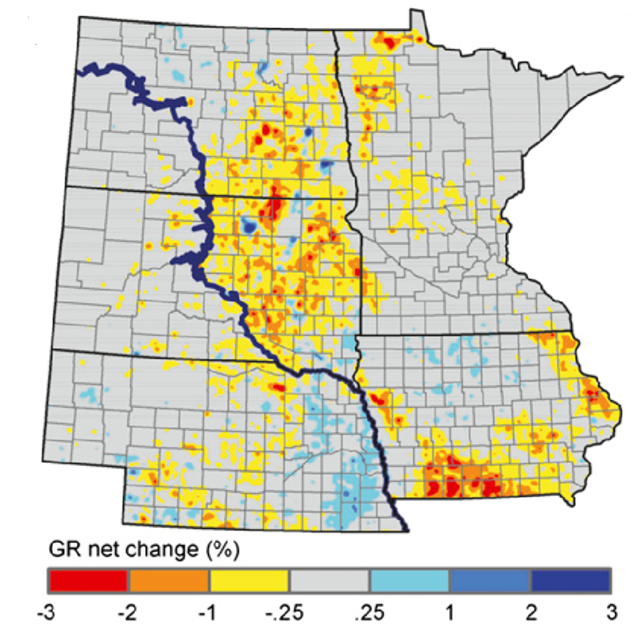Biofuel rush wiping out America’s grasslands at fastest pace since the 1930s Dust Bowl – Rates of grassland loss are ‘comparable to deforestation rates in Brazil, Malaysia, and Indonesia’
By Brad Plumer
20 February 2013
(Washington Post) – America’s prairies are shrinking. Spurred on by the rush for biofuels, farmers are digging up grasslands in the northern Plains to plant crops at the quickest pace since the 1930s. While that’s been a boon for farmers, the upheaval could create unexpected problems.
A new study by Christopher Wright and Michael Wimberly of South Dakota State University finds that U.S. farmers converted more than 1.3 million acres of grassland into corn and soybean fields between 2006 and 2011, driven by high crop prices and biofuel mandates (right). In states like Iowa and South Dakota, some 5 percent of pasture is turning into cropland each year. It’s a big transformation in the heart of the country: The authors conclude that the rates of grassland loss are “comparable to deforestation rates in Brazil, Malaysia, and Indonesia.” And those changes are already having plenty of impacts. For one, farmers are now growing crops on increasingly marginal land. In Nebraska, North Dakota and South Dakota, corn and soy are planted in areas that are especially vulnerable to drought. But farmers take the risk because corn and soy have become so lucrative — and, in part, because the federal government offers subsidized crop insurance in case of failure. (The study also finds evidence that many farmers are no longer enticed by federal conservation programs that pay for grassland cover.) The loss of pasture itself could also have big environmental impacts. Studies have found that grasslands hold carbon in their soil better than cropland does. So there’s a climate-change angle here. A 2008 paper in Science argued that fuels like corn ethanol and soy biodiesel lose a portion of their carbon advantage over gasoline if farmers are simply digging up virgin grassland to grow the crops. [more]
Biofuel rush wiping out America’s grasslands at fastest pace since the 1930s
